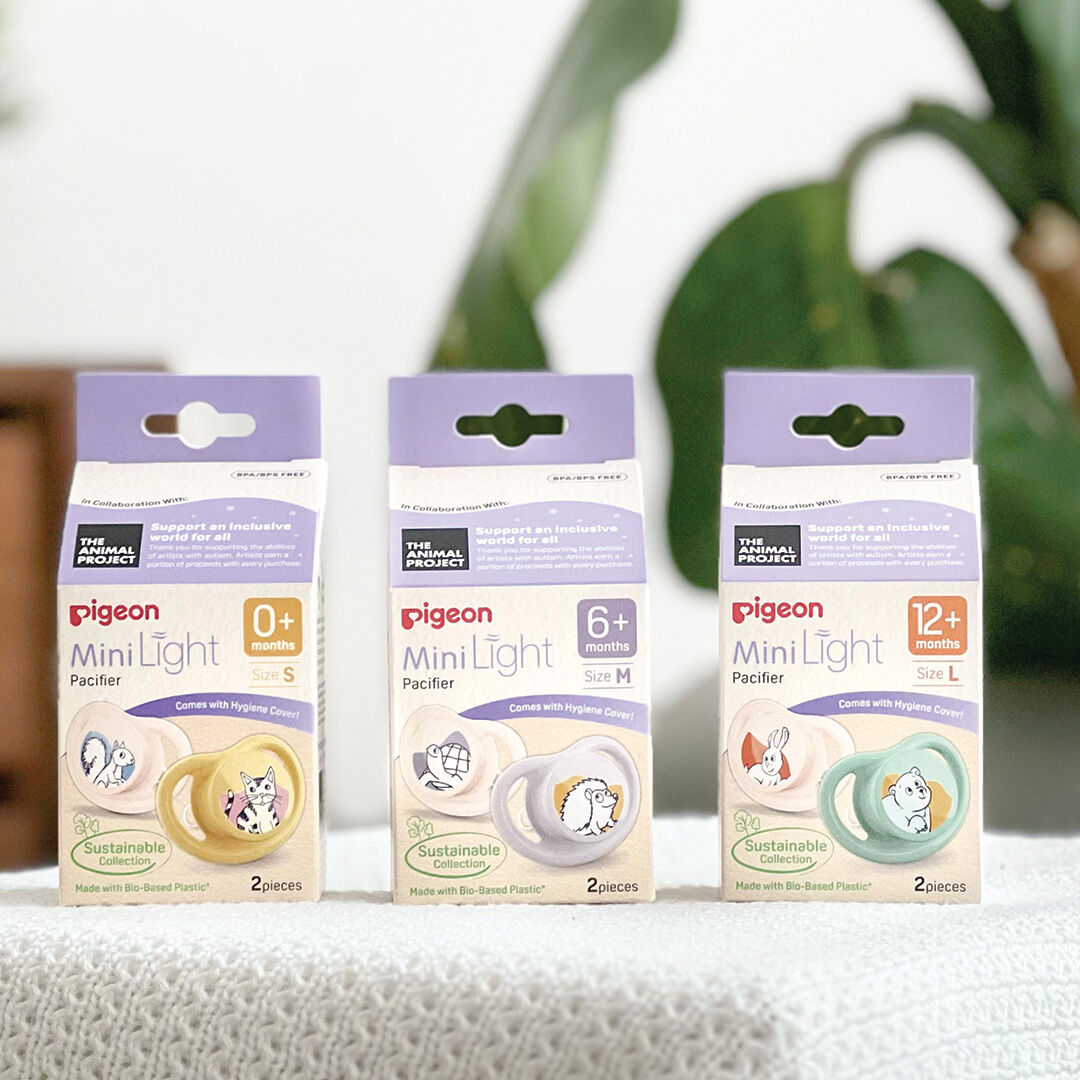Recent Articles
-
Is Your Baby’s Cup Helping or Hindering Their Oral Development?
Learn from Speech & Feeding Therapist Dr Lisa Lim how straw drinking supports your baby’s oral development, and why the Pigeon StarTouch™ Cup makes the difference. -
MiniLight Pacifiers Made with Purpose Initiative
Discover the Pigeon MiniLight Pacifier, ultra-light, baby-safe, and designed with purpose through The Animal Project collaboration for comfort and inclusion. -
SofTouch vs. Step-Up: Which Pigeon Bottle Fits Your Baby’s Stage?
Discover the difference between Pigeon SofTouch™ and Step-Up™ bottles — two feeding systems designed to support your baby from first latch to independent sipping.
Does my baby have Colic? When to get help.

Bringing a new baby into the world is a joyous experience, but it can also come with its challenges. One of those challenges, which can be particularly distressing for parents, is colic. If your little one is experiencing prolonged periods of crying, you might be wondering, "Does my baby have colic?" This blog post aims to empower you to understand the signs and symptoms and provide clear guidance on when to seek professional advice here in Australia.
1. What is colic?
Colic is a term used to describe excessive, unexplained crying in a healthy, well-fed baby. While the exact cause remains unknown, it is a common condition that typically affects babies between 2 and 16 weeks of age.
Colic sometimes occurs without a clear cause, though betterhealth.gov suggest contributing factors such as maternal diet (including certain foods like cabbage, chocolate, and cow's milk), maternal drug-taking (with caffeine and nicotine linked to irritability), feelings of fullness, and the baby's general immaturity as they adapt to life outside the womb.
A helpful way to remember the characteristics of colic in babies is the "Rule of Threes": persistent crying for 3 or more hours per day, occurring 3 or more days per week, for 3 or more weeks.
2. What are the signs of colic in a newborn?
While signs of colic is different for every baby, here at Pigeon we recognise these common signs and symptoms that may indicate that your bub has colic:
- Intense, high-pitched crying: This crying is often more intense and distressed than regular hunger cries.
- Predictable timing: Crying often occurs in the late afternoon or evening.
- Physical signs: Your baby won’t stop crying and may exhibit other physical signs such as:
- Clenched fists
- Drawing their legs up to their chest
- An arched back
- A red face
- Trouble with feeding or sleeping: Some babies with colic may have difficulty settling down to feed or sleep in the late afternoon/night, even after they've stopped crying.
- Trust your parental instinct: If something doesn't feel quite right, trust that instinct - no one knows your baby better than you do.

3. When to see your GP?
Remember that you're not alone and help is available. While colic is often a diagnosis of exclusion (meaning other causes of crying have been ruled out), it's essential to seek professional advice to ensure your baby's well-being and your own peace of mind.
Here's when to consult your General Practitioner (GP) or Child Health Nurse for baby advice:
- Crying is constant or worsening: If your baby's crying is persistent, doesn't seem to have any breaks, or is getting progressively worse, it's important to seek medical advice.
- Your baby has other symptoms: If your baby is experiencing feeding difficulties, poor weight gain, fever, vomiting, or any other concerning symptoms, consult a healthcare professional.
- You're feeling overwhelmed or unsure: Parenting can be overwhelming, and persistent crying can significantly increase stress levels. If you're feeling anxious, exhausted, or unsure about how to cope, please contact your GP or Child Health Nurse.

4. How can Pigeon products help with colic in babies?
Pigeon understands the challenges parents face when it comes to a baby with colic, that's why we've designed our products with your baby's comfort in mind. A key feature in our baby bottle teats is the Pigeon Air Ventilation System (AVS™), which is designed to regulate air pressure inside the bottle.
The AVS™ has specially designed projections at the base and the top of the teat, allowing milk to flow smoothly into your baby’s mouth. By adjusting the air pressure, the AVS™ helps to minimise the amount of air your baby takes in during feeding. You can read more about how air-vented bottles can help reduce fussiness in babies in our blog: How an air-vented bottle can help a fussy feeder
Minimising air intake can be particularly helpful for babies who are experiencing colic symptoms, as it can help to reduce discomfort and fussiness associated with baby gas or colic.
Recommended Products:
- Pigeon Softouch™ Bottles with Peristaltic PLUS Teat:
- The anti-colic system helps minimise swallowed air.
- The soft, breast-like Peristaltic PLUS teat supports natural latch and smooth tongue movement.
- They’re BPA & BPS free, and trusted by hospitals and parents globally.
- NEW Pigeon Biomass-PP Bottles
- Eco-friendly, made from sustainably sourced plant-based plastics.
- Feature the same trusted Softouch™ teat.
- Reduce CO2 emissions, making them a great choice for parents who care about the planet.
Our SOFTOUCH BPP PERISTALTIC PLUS TEAT SS 1PCS has received many excellent reviews, including this one from Annabellejjulia:
“Great teats for paced feeding - This year is a lifesaver! Other teats I used had too fast of a flow and would cause bub to bring up most of the milk. These teats I could tell were more natural and bub had to work harder to get the milk out, like with the breast. I love these teats, and the latch line to indicate if bubs got enough teat."

The Pigeon Softouch™ teat is a result of over 60 years of research into infant sucking behaviours. Its design helps babies feed calmly, which can be especially beneficial during unsettled periods, such as colic.
Remember, colic is temporary, and it will get better. While it might not feel like it now, this phase will pass, and your baby will grow out of it.





